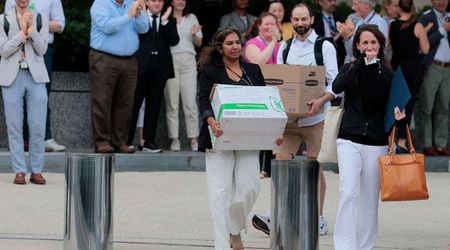TikTok Scam Lures Users with False Promise of $6,400 Government Subsidy

A concerning scam has emerged on TikTok, enticing users with the false promise of a $6,400 government subsidy. The deceptive scheme claims that the United States government is offering free money, targeting vulnerable individuals. Tony Binkley, President/CEO at Better Business Bureau of Greater East Tennessee, highlights the risks associated with this fraudulent offer.

The scam unfolds through TikTok videos, featuring influencers urging viewers to believe in the authenticity of a supposed $6,400 subsidy. In one video, an automated voice asserts the reality of the 6,400 credits and prompts viewers to answer a few questions for eligibility. However, the promised subsidy is nonexistent, and scammers aim to exploit those who may be desperate for financial assistance.

Binkley emphasizes that the deceptive ads mislead individuals by suggesting the funds can be used for various purposes, such as groceries, utilities, and bills. However, the truth is that the subsidy, if real, is claimed to apply only to insurance payments.
The influencers involved in promoting this scam employ tactics to create a sense of urgency, urging users to act quickly and discouraging them from seeking advice from trusted sources. The ultimate goal is to extract personal information from unsuspecting victims.
"They never want you to wait. They don’t want you to talk with anybody else and get the truth from people you know and trust. They want you to trust them," warns Binkley.
Despite some influencers attempting to expose the scam and caution viewers, the prevalence of these misleading TikTok videos has prompted consumer protection agencies, government bodies, and financial institutions to issue warnings. The key message is to remain vigilant, avoid falling for deceptive pitches, and consult reliable sources for verification.

The scam underscores the growing challenge of misinformation on social media platforms, and authorities stress the importance of educating the public to recognize and report fraudulent activities. As users navigate the digital landscape, it becomes crucial to scrutinize offers that seem too good to be true and seek information from reputable sources.
Given the widespread reach of TikTok and the potential harm caused by such scams, individuals are urged to stay informed, share awareness about fraudulent schemes, and report suspicious activity promptly. The rise of digital scams reinforces the need for collective efforts to enhance cybersecurity measures and protect vulnerable individuals from falling victim to deceptive tactics.

The $6,400 stimulus check scam unfolds with a level of sophistication that encompasses various deceptive tactics. Beginning with the creation of fake celebrity endorsement ads, scammers employ deep fake technology to generate lifelike videos featuring endorsements from prominent figures like Dr. Phil and Joe Biden. These misleading ads purport to offer a time-sensitive $6,400 subsidy stimulus check, manipulating viewers into believing the authenticity of the enticing offer.
Upon clicking on the fake ads, unsuspecting users are redirected to phishing websites designed to replicate official government aid agencies. These sites falsely congratulate users on qualifying for the $6,400 stimulus and cunningly prompt them to input personal details, including sensitive information such as social security numbers and bank details.
In a follow-up phase, victims receive calls from fake government agents within 24 hours, further confirming their eligibility. The deceptive agents then assert the need for an upfront "activation fee" to initiate the stimulus deposit—a deceptive ploy, as legitimate government stimulus checks do not entail upfront fees.
@you_rekillinmesmalls Avoid the $6400 subsidy scam! #useful #help ♬ original sound - Jorty Unofficial
The scam intensifies with scammers demanding untraceable payments, often in the form of gift cards or cryptocurrency, disguising it as the purported activation fee. In some instances, scammers attempt to gain remote access to victims' computers or bank accounts, facilitating direct theft of funds.
After successfully obtaining money or sensitive banking information, scammers execute a disappearing act. All attempts to contact the fake agent or agency prove futile, and associated websites vanish without a trace. This orchestrated sequence of deceit highlights the need for heightened awareness and vigilance to protect individuals from falling victim to such elaborate scams.






















